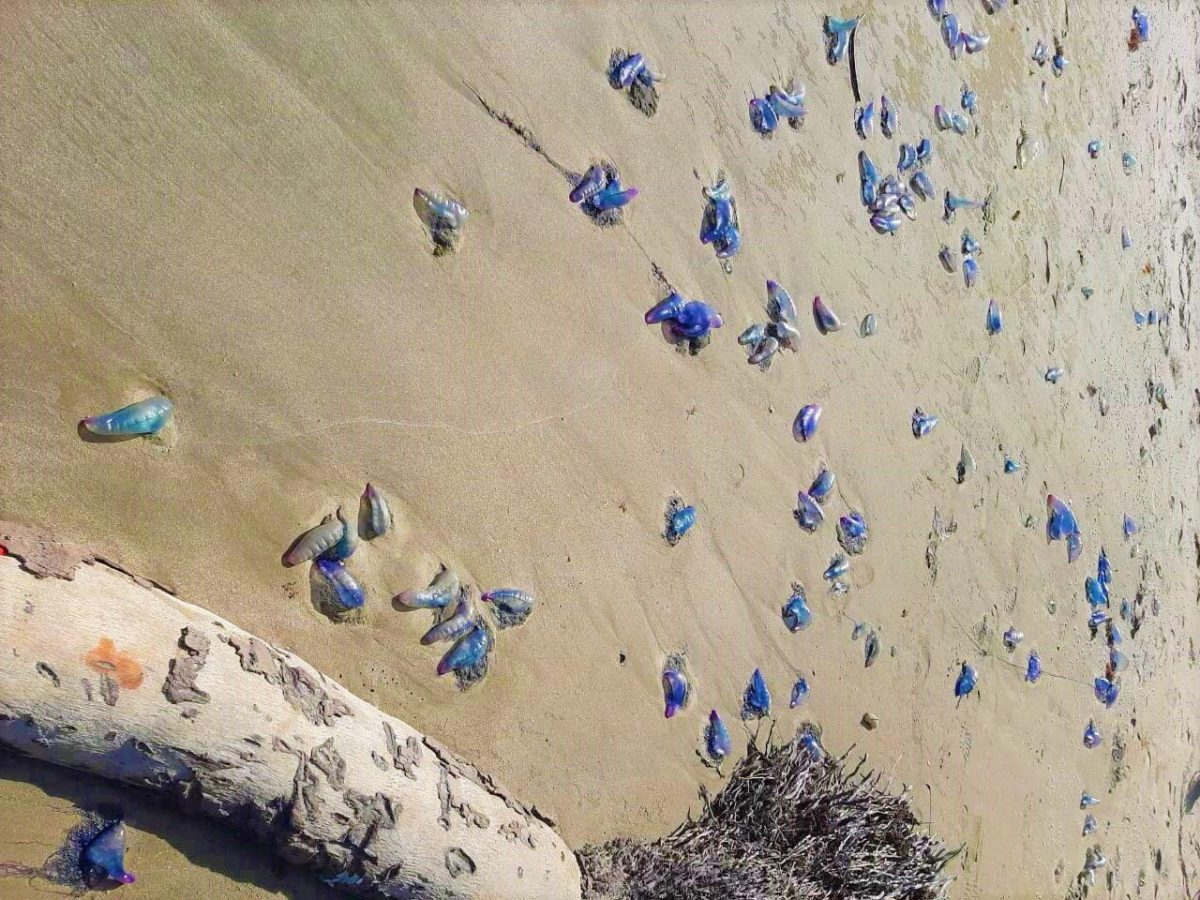(Trinidad Express) The Portugese Man O’ War, a marine animal that resembles a jelly fish, continue to wash ashore in unprecedented numbers along the beaches on Trinidad east and north coasts.
These organisms classified by the Institute of Marine Affairs as a dangerous marine creature, are known as siphonophore.
There differences between jellyfish and the Portugese Man O’ War.
Doctor Judith Gobin a clinical ecologist and Lecturer at the University of the West Indies St. Augustine told the Express yesterday: “The Portuguese man o’ war is often called a jellyfish as it looks like one. It is easily recognized by its balloon-like float, which may be blue, violet, or pink and reaches to about six inches above the water. It is actually a species of siphonophore, another group of animals that is closely related to jellyfish.”
“Siphonophores belong to the Cnidaria phylum: a group of animals that includes corals, sea anemones, hydroids, and the true jellyfish. Siphonophores are an unusual faunal group as they are really a “colony” of specialized genetically identical individuals, called zooids; but the zooids may be of different forms and perform different functions. The colony however works as a single body. For example, in this animal, four specialized parts work to allow it to float, capture prey, feed and reproduce.” she said.
She also stated that while the organism is especially prominent along the east coast, the large amount of man o’ war currently washing ashore is unprecedented. These numbers, she suggests, are indicators of prime conditions for the survival of the species.
“I do not recall seeing them in such very large numbers at any one time. Since their only means of propulsion is by winds, currents and tides, their abundance at this time suggests that all conditions are right (appropriate) for them to survive in the sea and coastal waters. This includes food availability, winds and currents or temperature.”
While the man o’ war may appear attractive due to its colors and curious shape, she said that caution should be exercised during this time due to their venomous nature.
“As most of us are aware, they possess long strands of tentacles. They can be quite long, up to 100 feet. Stinging nematocysts are present in these tentacles. These are microscopic capsules with coiled, barbed tubes which can deliver venom capable of paralyzing and killing small fish and crustaceans on which it feeds. It is rarely deadly to people, but can be quite painful and may cause welts on the skin,” said Gobin.

